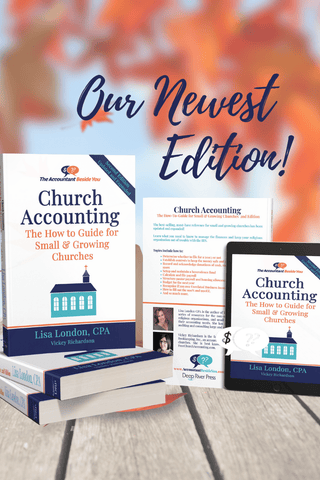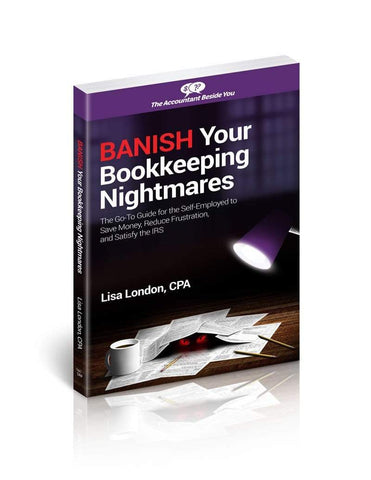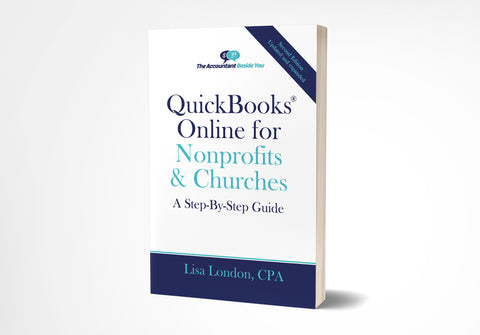New IRS Rules for 1099 Independent Contractors
Along with all the other changes we have dealt with in 2020, the IRS has also changed how organizations report the money paid to independent contractors, or as they prefer to label it, Non-employee Compensation.
In past years, if your organization paid a person for services who was NOT an employee, you may have needed to file a 1099-Misc for the total amount given over the year. The 1099-Misc listed royalties, rents, and other miscellaneous items, but its most common use was for payments to independent contractors.
Starting in 2020, the IRS now requires payments to independent contractors are shown on a new form 1099-NEC (non-employee compensation) instead of the 1099-MISC (miscellaneous).
Table of Contents
What is Non-employee Compensation?
How do I determine who are Independent Contractors?
How do I know which contractors need to receive Form 1099 this year?
How do I fill out Form 1099-NEC?
What do I do to my chart of accounts for the 1099 changes?
What else needs to be sent with the 1099s?
What is Non-employee Compensation?
The IRS recognizes as non-employee compensation monies paid for services performed by Independent Contractors. An independent contractor is someone who is not your employee and has been paid over $600 throughout the year. The $600 also includes any parts or materials the contractor billed you for.
How do I determine who are Independent Contractors?
The IRS assumes individuals working for an organization are employees unless it is proven otherwise. You probably already understand what an employee is. An independent contractor is a little less clear. From the IRS website:
People such as doctors, dentists, veterinarians, lawyers, accountants, contractors, subcontractors, public stenographers, or auctioneers who are in an independent trade, business, or profession in which they offer their services to the general public are generally independent contractors. However, whether these people are independent contractors or employees depends on the facts in each case. The general rule is that an individual is an independent contractor if the payer has the right to control or direct only the result of the work and not what will be done and how it will be done. The earnings of a person who is working as an independent contractor are subject to Self-Employment Tax.
The critical passage above is if the payer (the organization) can control or direct ONLY the result of the work and not what will be done and how it will be done. If the executive director can tell the contractor exactly how to do the job and when they must work on it, the contractor will be considered an employee.
Contractor or Employee?
A bookkeeper comes to the organization once a week to do the bookkeeping. If he has other clients, controls when the work will be done, and gives the client the results (i.e., monthly financial statements), it is pretty clear he is an independent contractor.
If the bookkeeper is required to come in for a specified number of hours each week determined by the director and is given detailed instructions on how to do the bookkeeping, he may be considered an employee.
The gardener who uses his own equipment and is paid to keep the cemetery mowed and clear of branches may be treated as an independent contractor, as can the plumber who comes in for a particular problem.
However, nursery workers and secretaries must be treated as employees as they do not have the right to control or direct the work. The nursery attendant must work when the children are there.
How do I know which contractors need to receive Form 1099 this year?
If the service provider's business is incorporated, you do not need to send them a 1099-NEC.
If you have an automated system like QuickBooks or QuickBooks Online, there are 1099 Summary and 1099 Detail reports. If you had designated your vendors as potential 1099 contractors when you set them up, these reports would show you which vendors were paid more than $600 during the year.
For any accounting system, run a report on purchases by vendor. Review it for any non-corporate vendors and lawyers that were paid over $600. Payments for royalties must be shown for any paid over $10.
How do I fill out Form 1099-NEC?
Once you know which contractors you paid over $600 to, you will need to fill out Form 1099-NEC.

Starting at the upper left box, record your organization's name as the PAYER. The PAYER TIN is the organization's tax identification number. The RECIPIENT'S TIN is the contractor's SSN or business TIN. Under the RECIPIENT'S name, use the contractor's name and address.
The total amount you paid him for the year is input in Box 1 Non-employee compensation.
If you withheld any federal income tax, it would be shown in Box 4 Federal income tax withheld. Additionally, if any state tax were withheld, Boxes 5-7 would need to be completed.
NOTE: If any taxes were withheld, Form 1099-NEC is required to be filed, even if compensation under the $600 limit.
When do I use Form 1099-MISC?
Form 1099-MISC looks similar to prior years, but the boxes have changed slightly.

This form is used to record payments for a variety of miscellaneous things. Most nonprofits will only use a few of these boxes.
For example, if your organization rents office space and pays a property manager, you don't need to complete Box 1 Rents on this form. If you work directly with the building owner and his business is not incorporated, you do.
Box 2 Royalties may be required if you have contracted with an author for publications.
Box 3 Other is the catch-all. It would include a prize or cash award given to a non-employee. Check with a local CPA if you think you may have an item that should be reported there.
Box 4 Federal tax withheld is only used if taxes were withheld from any payments.
The 1099-MISC is also the form used to show Gross proceeds over $600 paid to an attorney. Use Box 10 for the total amount paid during the year.
What do I do to my chart of accounts for the 1099 changes?
Now that you have seen what is on the new 1099 forms, you will want to revise your chart of accounts to make the reporting easier going forward. Start by setting a separate expense account for each of the boxes on the forms you will be using.
For example, you probably already have a Non-employee Compensation (or Independent Contractor) Expense account. This account would have the amounts paid to all of your contractors throughout the year.
If you withhold federal taxes for the contractor, you need a liability account (Independent Contractor Withholding) to show the amount due to the federal government. Additionally, liability accounts should be set up for the states if appropriate. Please note these are LIABILITY accounts, not EXPENSE accounts. The total amount due to the contractor should be recorded as an expense, and the amount withheld as a liability.
For example:
Your bookkeeper has asked you to withhold 15% of her billings for federal withholding on the $1000 invoice. You would write her a check for $850 ($1000-$150 (15%)). The $150 you withheld must be recorded as a liability. As a journal entry, it would look like this:
Debit 1099-NEC Bookkeeping Expense $1000.00
Credit 1099-NEC Federal Tax Withheld Liability 150.00
Credit Accounts Payable (or Cash) 850.00
If you have Rents, Royalties, or other Misc. items, you will want to make sure any that need to be recorded on the 1099-MISC have a separate line item from those that do not.
If you are using QuickBooks or QuickBooks Online, here is a link to details on how to run a transaction report and prepare the related journal entries from Intuit.
How to modify your chart of accounts for your 1099... (intuit.com)
What else needs to be sent with the 1099s?
Form 1096 is the Transmittal form that is sent with the paper copies. This form tells the government which type of information forms are being submitted. If you need to submit both the 1099-NEC and the 1099-MISC, you will need to complete two separate Forms 1096.

If you are filing electronically, Form 1096 is not used.
When are the 1099s due?
The primary reason for the new Form 1099-NEC was to set its filing date earlier than the 1099-MISC. The due date for the 1099-NEC is on or before February 1, 2021. The 1099-MISC is due by March 1, 2021, if you file by paper, and March 31, 2021, if you file electronically.
How do I file the 1099s?
Both the 1099-MISC and the 1099-NEC may be mailed in or filed electronically. If you are using the paper versions, you can not use the red Copy A from the IRS website. You will need to purchase them from an office supply store or order the official version from the IRS website.
You may also file electronically. If you are filing over 250 forms per year, you can participate in the FIRE program for free. Details are here: Who Can Participate in FIRE | Internal Revenue Service (irs.gov)
But most of us have substantially less than 250 forms. They can be done through QuickBooks or other automated accounting systems, usually for a fee. Otherwise, you can search the internet for software providers to do the electronic filing for you.
How can I get free 1099s?
The IRS offers free paper 1099 on their website at Online Ordering for Information Returns and Employer Returns | Internal Revenue Service (irs.gov). The IRS currently has a 10-day turnaround for the forms. Be sure to order a second 1096 Transmittal form if you are filing both the 1099-NEC and the 1099-MISC.
There is a fillable PDF version on the IRS website at 2020 Form 1099-NEC (irs.gov). You can use these to fill out and print for the employee and any state requirements, but the top red Copy A form is not scannable, and therefore, the IRS will not allow it to be printed and mailed. You must use the official ones from the IRS or office supply store for the red Copy A.
I know that is a lot of information, but you'll need to double check that everything is filed correctly with the new changes. For additional information, check out my books, Church Accounting-The How-To Guide for Small & Growing Churches or Nonprofit Accounting for Volunteers, Treasurers, and Bookkeepers.
Don't forget. There are other deadlines in the first quarter of the year. Check out this blog post for more information. 2021 IRS Deadlines for Nonprofits (accountantbesideyou.com)
Author: Lisa London, CPA
ISNI 0000 0004 5059 7909




